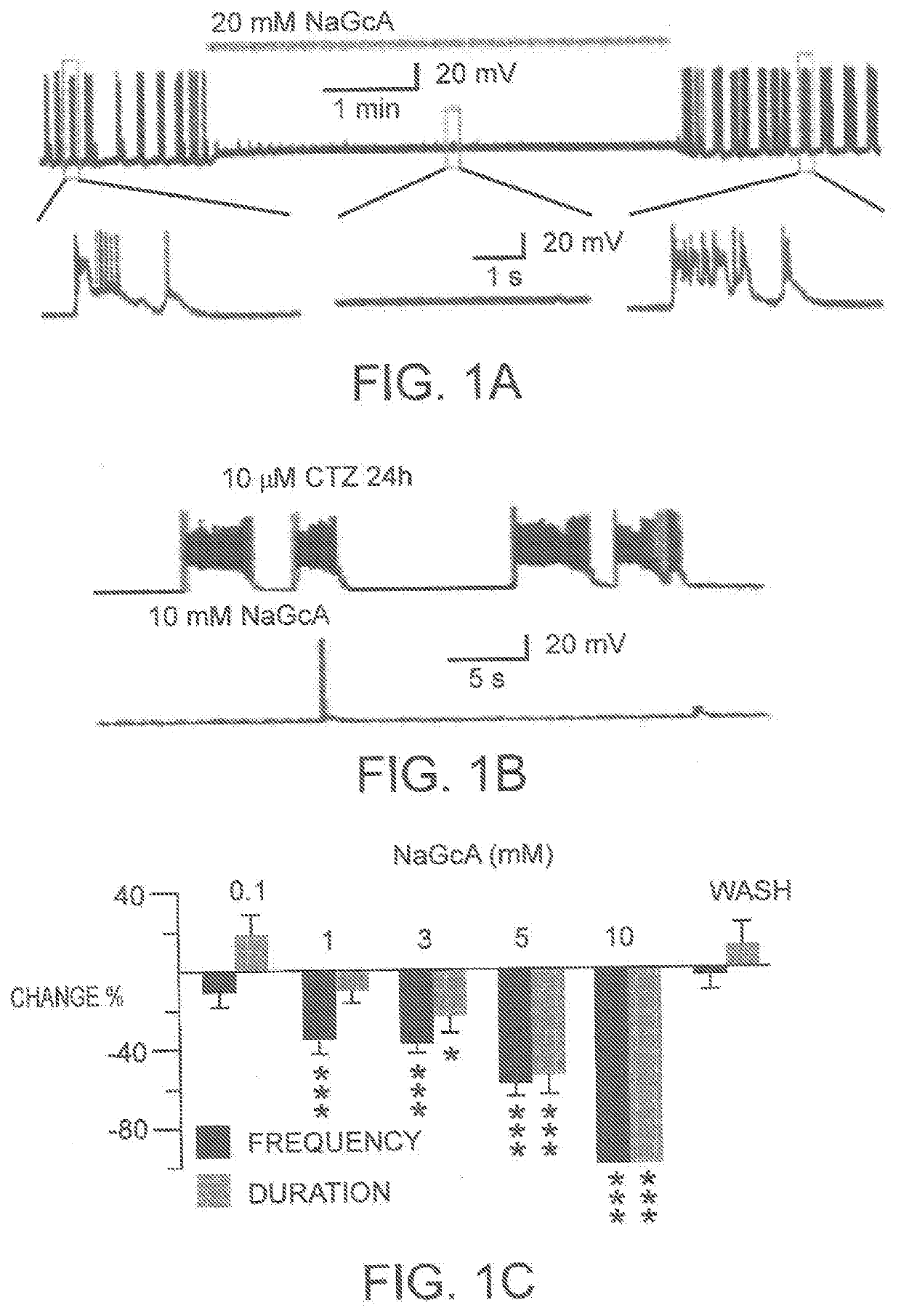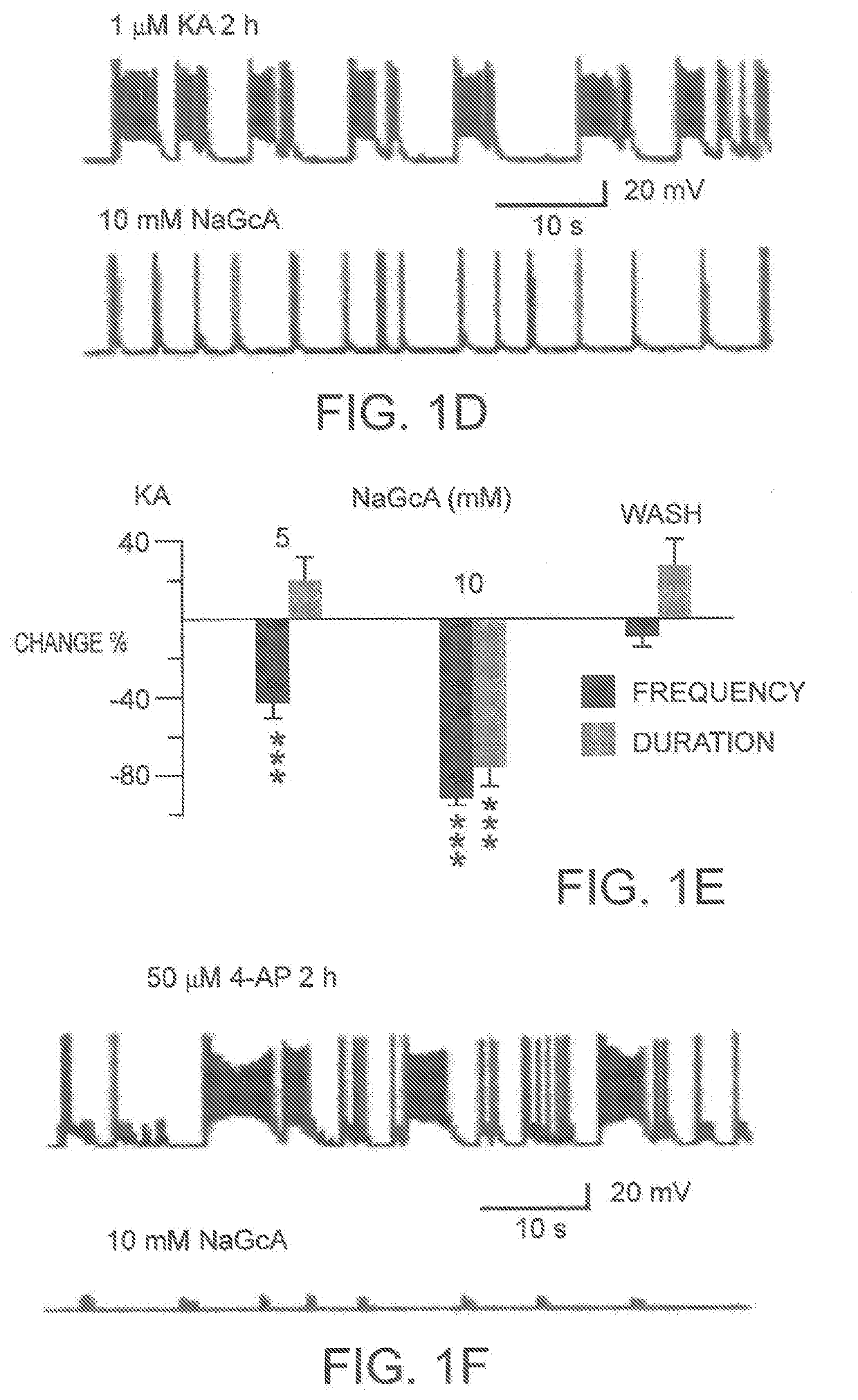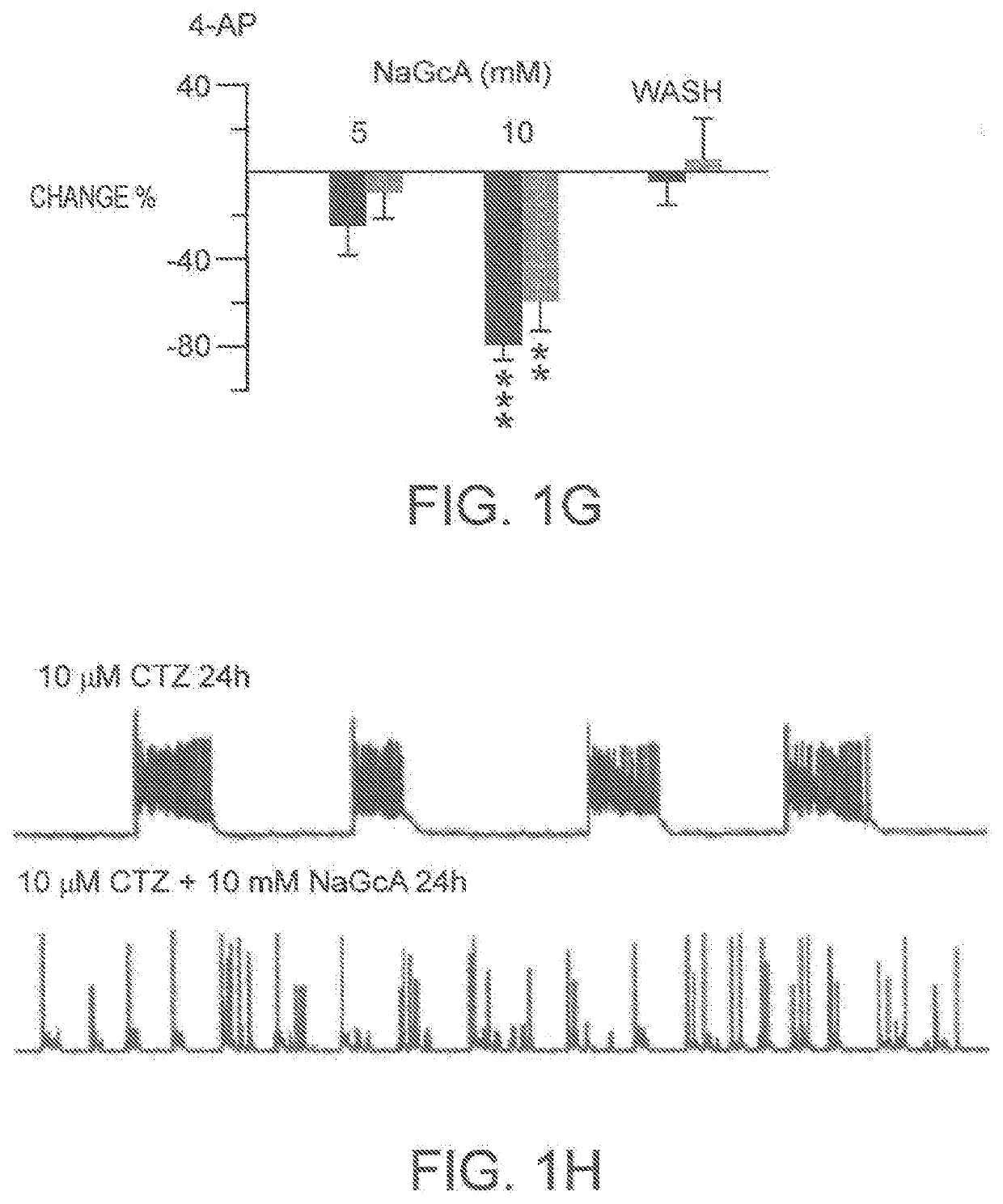Glucose oxidase compositions as a neonate anticonvulsant
a technology of glucose oxidase and compositions, which is applied in the field of neurodegenerative disorders, can solve the problems of affecting cognitive development, affecting the treatment effect of bumetanide, and refractory neonatal seizures, and achieves the effects of reducing the effect of bumetanide, and reducing the risk of recurren
- Summary
- Abstract
- Description
- Claims
- Application Information
AI Technical Summary
Benefits of technology
Problems solved by technology
Method used
Image
Examples
example i
Cell Culture And Transfection
[0323]Mouse cortical neurons were prepared from newborn C57BL / 6 mice as previously described. Qi et al., “Cyclothiazide induces robust epileptiform activity in rat hippocampal neurons both in vitro and in vivo”The Journal Of Physiology 571:605-618 (2006). Briefly, the newborn mouse cerebral cortices were dissected out in ice-cold HEPES-buffered saline solution, washed and digested with 0.05% trypsin-EDTA at 37° C. for 20 min. After deactivation of trypsin with serum-containing medium, cells were centrifuged, resuspended, and seeded on a monolayer of cortical astrocytes at a density of 10,000 cells / cm2 in 24-well plates. The neuronal culture medium contained MEM (500 ml, Invitrogen), 5% fetal bovine serum (Atlanta Biologicals), 10 ml B-27 supplement (Invitrogen), 100 mg NaHCO3, 2 mM Glutamax (Invitrogen), and 25 units / ml penicillin & streptomycin. AraC (4 M, Sigma) was added to inhibit the excessive proliferation of astrocytes. Cell cultures were maintain...
example ii
[0325]A LIVE / DEAD® Viability / Cytotoxicity Assay Kit (L3224, Life Technologies) containing ethidium homodimer-1 and calcein-AM was used to examine cell viability. Ethidium homodimer-1 binds to cellular DNA and typically labels dead cells in red fluorescence, while Calcein-AM can be cleaved by esterases in live cells to give strong green fluorescence. After drug treatment, neurons were incubated in bath solution containing 1 μM calcein-AM and 4 μM ethidium homodimer-1 at room temperature for 40 min. Cell survival and death rate were measured by quantifying the percentage of green and red fluorescent cells, respectively. For each group, at least 5 fields of each coverslip were imaged for data analysis.
example iii
Mouse Brain Slice Preparation
[0326]Brain slices were prepared from C57BL / 6 mice (male and female). Animals were anesthetized with Avertin (tribromoethanol, 250 mg / kg) and decapitated. Hippocampal horizontal sections (400 μm) were prepared by Leica VT1200S vibratome in ice-cold artificial cerebral spinal fluid (aCSF) (in mM): 125 NaCl, 26 NaHCO3, 10 glucose, 2.5 KCl, 2.5 CaCl2, 1.25 NaH2PO4, and 1.3 MgSO4, osmolarity 290-300 mOsm, aerated with 95% O2 / 5% CO2. Slices were then transferred to incubation chamber containing normal aCSF saturated with carbogen (95% O2 / 5% CO2) at 33° C. for 30 min, followed by recovery at room temperature for 1 hour before use. Individual slice was transferred to a submerged recording chamber where they were continuously perfused (2-3 ml / min) with aCSF saturated by 95% O2 / 5% CO2 at 31-33° C. (TC-324B, Wamer instruments Inc). Slices were visualized with infrared optics using an Olympus microscope equipped with DIC optic.
PUM
| Property | Measurement | Unit |
|---|---|---|
| time | aaaaa | aaaaa |
| rectification currents | aaaaa | aaaaa |
| Cl- currents | aaaaa | aaaaa |
Abstract
Description
Claims
Application Information
 Login to View More
Login to View More - R&D
- Intellectual Property
- Life Sciences
- Materials
- Tech Scout
- Unparalleled Data Quality
- Higher Quality Content
- 60% Fewer Hallucinations
Browse by: Latest US Patents, China's latest patents, Technical Efficacy Thesaurus, Application Domain, Technology Topic, Popular Technical Reports.
© 2025 PatSnap. All rights reserved.Legal|Privacy policy|Modern Slavery Act Transparency Statement|Sitemap|About US| Contact US: help@patsnap.com



